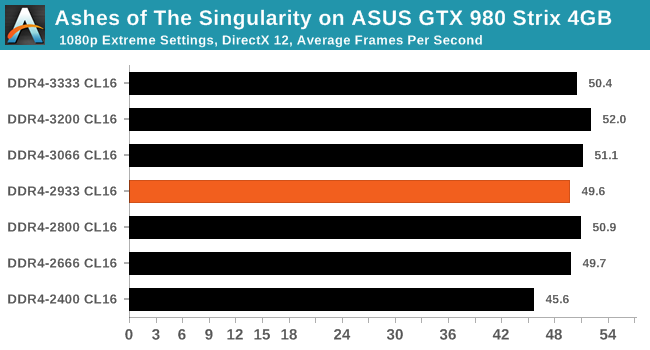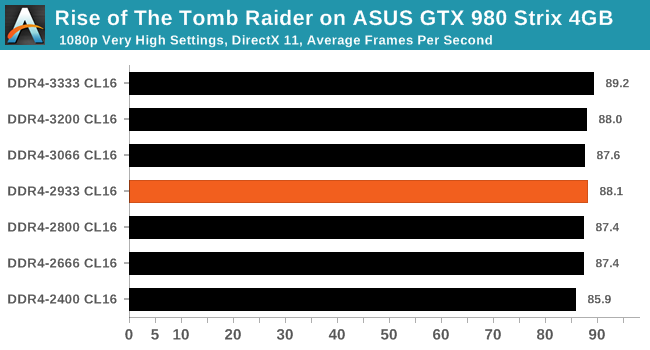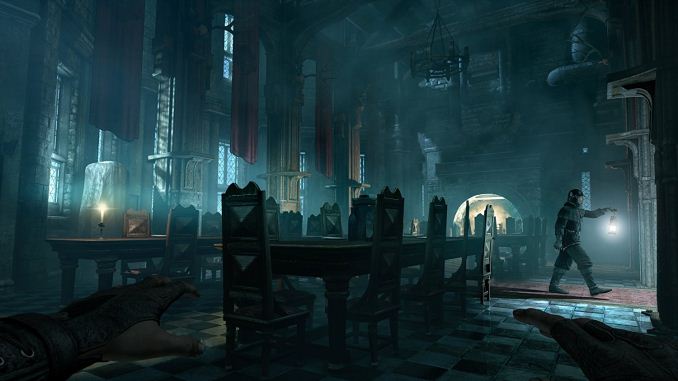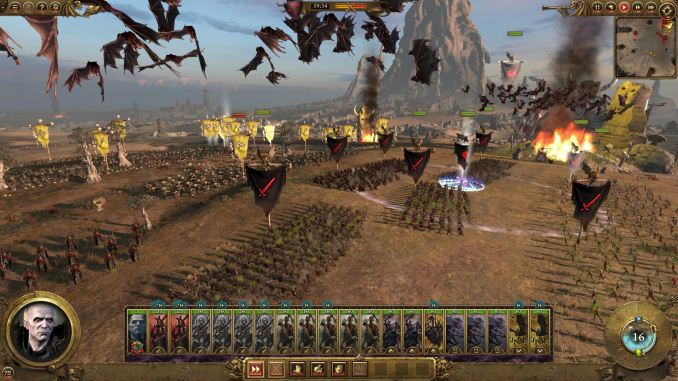Memory Scaling on Ryzen 7 with Team Group's Night Hawk RGB
by Ian Cutress & Gavin Bonshor on September 27, 2017 11:05 AM ESTGaming Performance
Ashes of the Singularity (DX12)
Seen as the holy child of DX12, Ashes of the Singularity (AoTS, or just Ashes) has been the first title to actively go and explore as many of the DX12 features as it possibly can. Stardock, the developer behind the Nitrous engine which powers the game, has ensured that the real-time strategy title takes advantage of multiple cores and multiple graphics cards, in as many configurations as possible.

Performance with Ashes over our different memory settings was varied at best. The DDR4-2400 value can certainly be characterized as the lowest number near to ~45-46 FPS, while everything else is rounded to 50 FPS or above. Depending on the configuration, this could be an 8-10% difference in frame rates by not selecting the worst memory.
Rise Of The Tomb Raider (DX12)
One of the newest games in the gaming benchmark suite is Rise of the Tomb Raider (RoTR), developed by Crystal Dynamics, and the sequel to the popular Tomb Raider which was loved for its automated benchmark mode. But don’t let that fool you: the benchmark mode in RoTR is very much different this time around.
Visually, the previous Tomb Raider pushed realism to the limits with features such as TressFX, and the new RoTR goes one stage further when it comes to graphics fidelity. This leads to an interesting set of requirements in hardware: some sections of the game are typically GPU limited, whereas others with a lot of long-range physics can be CPU limited, depending on how the driver can translate the DirectX 12 workload.

We encountered insignificant performance differences in RoTR on the GTX 980. The 3.3 FPS increase at average framerates from top to bottom does not exactly justify the price cost between DDR4-2400 and DDR4-3333 when using a GTX 980 - not in this particular game at least.
Thief
Thief has been a long-standing title in the hearts of PC gamers since the introduction of the very first iteration back in 1998 (Thief: The Dark Project). Thief is the latest reboot in the long-standing series and renowned publisher Square Enix took over the task from where Eidos Interactive left off back in 2004. The game itself uses the UE3 engine and is known for optimised and improved destructible environments, large crowd simulation and soft body dynamics.

For Thief, there are some small gains to be had from moving through from DDR4-2400 to DDR4-2933, around 5% or so, however after this the performance levels out.
Total War: WARHAMMER
Not only is the Total War franchise one of the most popular real time tactical strategy titles of all time, but Sega has delved into multiple worlds such as the Roman Empire, the Napoleonic era, and even Attila the Hun. More recently the franchise has tackeld the popular WARHAMMER series. The developers Creative Assembly have integrated DX12 into their latest RTS battle title, it aims to take benefits that DX12 can provide. The game itself can come across as very CPU intensive, and is capable of pushing any top end system to their limits.

Even though Total War: WARHAMMER is very CPU performance focused benchmark, memory had barely any effect on the results.














65 Comments
View All Comments
Threska - Saturday, September 30, 2017 - link
That could potentially be VERY interesting since GPUs are one of the few things that need a high bandwidth.Thefinaleofseem - Wednesday, September 27, 2017 - link
Pity that latency wasn't tested as well as clocks. It would be interesting to see how Ryzen scales with both factors.germz1986 - Wednesday, September 27, 2017 - link
I would really like to see a review of this G.Skill kit F4-3200C14D-16GFX, It seems it was the first ryzen optimized set for 3200 @ fairly low timings out of the box.kpb321 - Wednesday, September 27, 2017 - link
Small nitpickDDR4-2933 16-18-18 (Nearest to memory kit rating)
DDR4-3066 16-18-18
DDR4-3066 is actually closer to the memories kits rated 3000 speed. 2933 is the max speed supported by the processor that is below the rated speed of the kit. 3066 would be a slight overclock.
Gavin Bonshor - Wednesday, September 27, 2017 - link
It probably needs re-wording as 2933MHz CL16 is what the XMP profile runs at on Ryzen with this particular kit.nismotigerwvu - Wednesday, September 27, 2017 - link
Perhaps he was going by "The Price Is Right" rules :)Dr. Swag - Wednesday, September 27, 2017 - link
You guys should've lowered timings along with frequency to keep latency constant while increasing bandwidth/IF clock speedskpb321 - Wednesday, September 27, 2017 - link
Those ashes results are interesting. They are the only one that doesn't show a fairly straight forward improvement as memory speed increases. For the tested kit you'd actually get better performance dropping speed down to DDR4 2800 instead of DDR4 2933. Same thing if you are OCs the memory 3200 is faster than 3333.Overall this makes me happy that I decided to spend an extra buck or two when I put together my Ryzen system to grab a 3000 kit which happened to be from Team Group also over the typical 2400/2666 kits around the same price. I hadn't typically seen the value in paying a premium for faster memory kits but the even the early indications showed it was more important for Ryzen systems and this shows how important it can be.
DanNeely - Wednesday, September 27, 2017 - link
That result makes me suspect the dominant effect we're seeing is something random not memory related.SpartanJet - Wednesday, September 27, 2017 - link
Really disappointing results, all people talked about is how Ryzen scalled with memory. I guess I'm going with Intel 8700k after all.